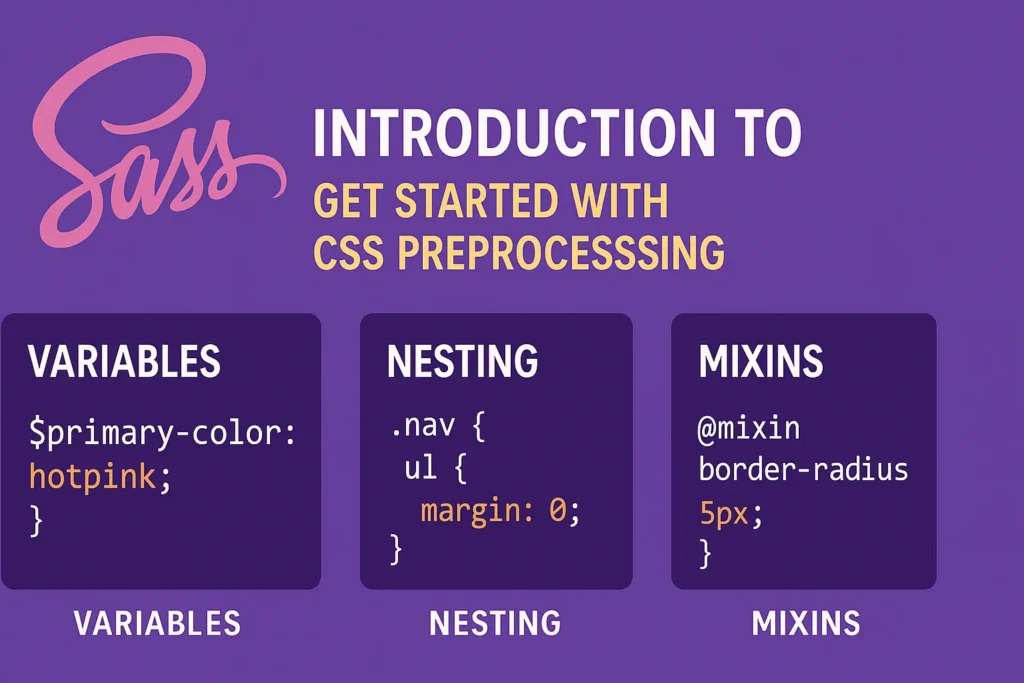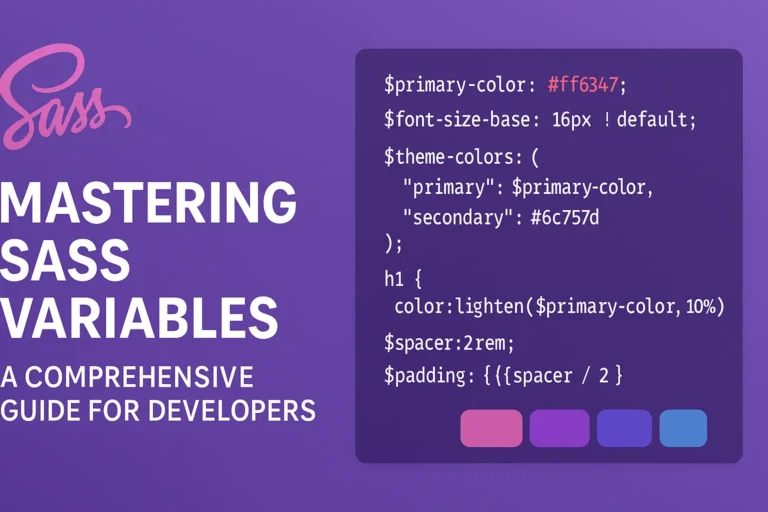What is SASS?
SASS, or Syntactically Awesome Style Sheets, is a preprocessor scripting language that is interpreted or compiled into Cascading Style Sheets (CSS). It extends CSS by providing several mechanisms unavailable in plain CSS, such as variables, nesting, mixins, and more.Variables
One of the most compelling features of SASS is variables. Instead of repeating values throughout your stylesheet, you can define variables and reuse them. For example:
$primary-color: #007bff;
$secondary-color: #6c757d;
.button {
background-color: $primary-color;
color: $secondary-color;
}
Nesting
SASS allows you to nest CSS selectors, making your stylesheets more readable and maintainable. For instance:
.container {
width: 100%;
.header {
background-color: #333;
color: #fff;
}
.content {
padding: 20px;
}
}
Mixins
Mixins are reusable blocks of styles that can be included in other selectors. They are particularly useful for vendor prefixes and cross-browser compatibility. Here’s an example:
@mixin transform($property) {
-webkit-transform: $property;
-ms-transform: $property;
transform: $property;
}
.box {
@include transform(rotate(30deg));
}
Advantages of using SASS
Modularity and Reusability
SASS promotes modularity by allowing you to break down your stylesheets into smaller, more manageable parts. This makes it easier to maintain and reuse styles across your project.
Improved Readability
With features like nesting and variables, SASS code tends to be more concise and readable compared to traditional CSS. This improves developer productivity and makes it easier to understand and modify stylesheets.
Code Organization
SASS enables you to organize your stylesheets more effectively, leading to a cleaner and more structured codebase. This can be particularly beneficial for larger projects with multiple developers working simultaneously.
Dynamic Functionality
SASS supports the use of functions and operations, allowing you to perform calculations and manipulate values dynamically. This adds a layer of flexibility to your stylesheets and opens up new possibilities for creative styling techniques.
Installing SASS
Getting started with SASS is straightforward. You can install it via npm (Node Package Manager) or use standalone versions like Sass CLI or Koala.
Using npm
If you have Node.js installed, you can install SASS globally using npm:
npm install -g sass
After installation, you can compile your SASS files to CSS using the following command:
sass input.scss output.css
Sass CLI
Alternatively, you can use the Sass command-line interface (CLI) to compile SASS files:
sass input.scss output.css
Koala
Koala is a GUI application that allows you to compile SASS files with a simple drag-and-drop interface. It’s a great option for those who prefer a visual tool for compiling SASS.
Conclusion
SASS offers a plethora of features that streamline the process of writing and maintaining CSS stylesheets. From variables and nesting to mixins and functions, SASS empowers developers to write cleaner, more modular code. By adopting SASS, you can improve code organization, enhance readability, and unleash the full potential of CSS. So why wait? Dive into the world of SASS and revolutionize your web development workflow today!






